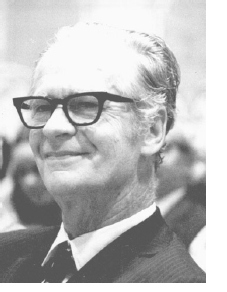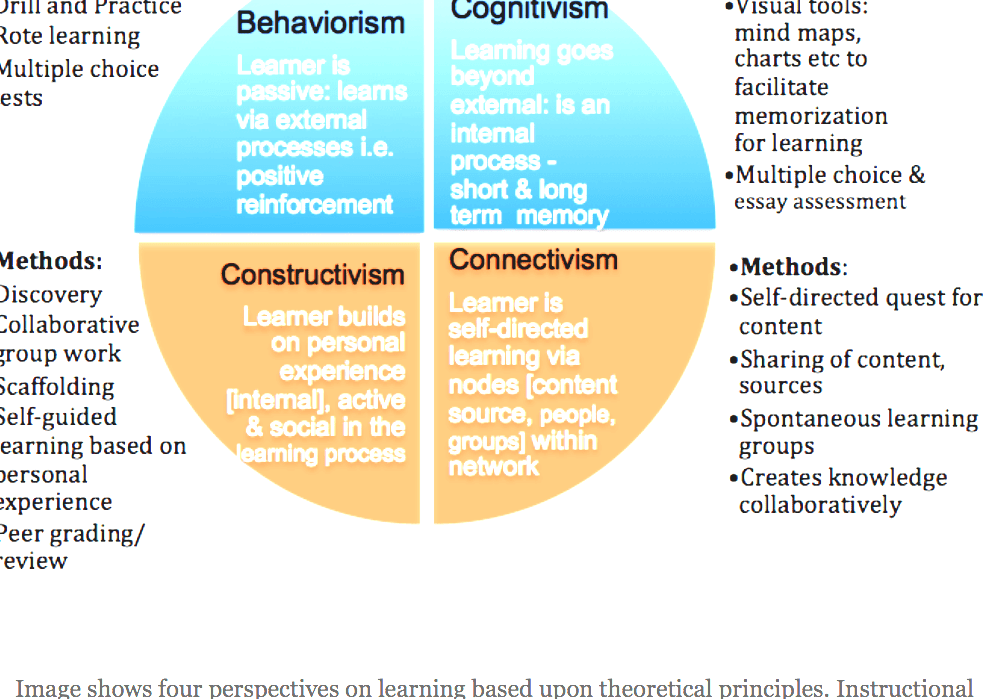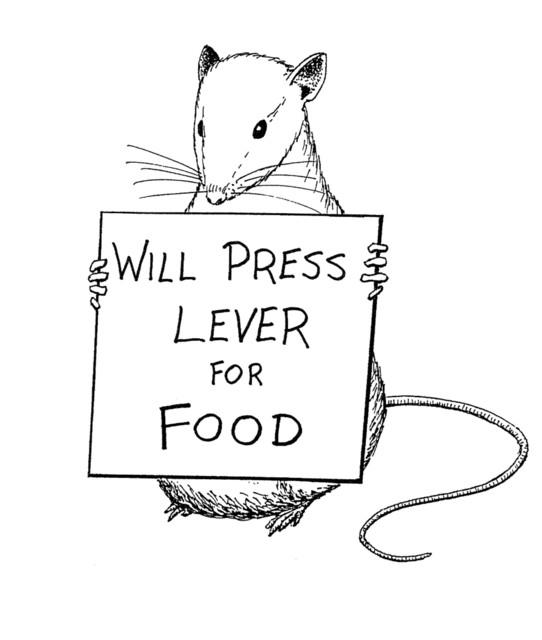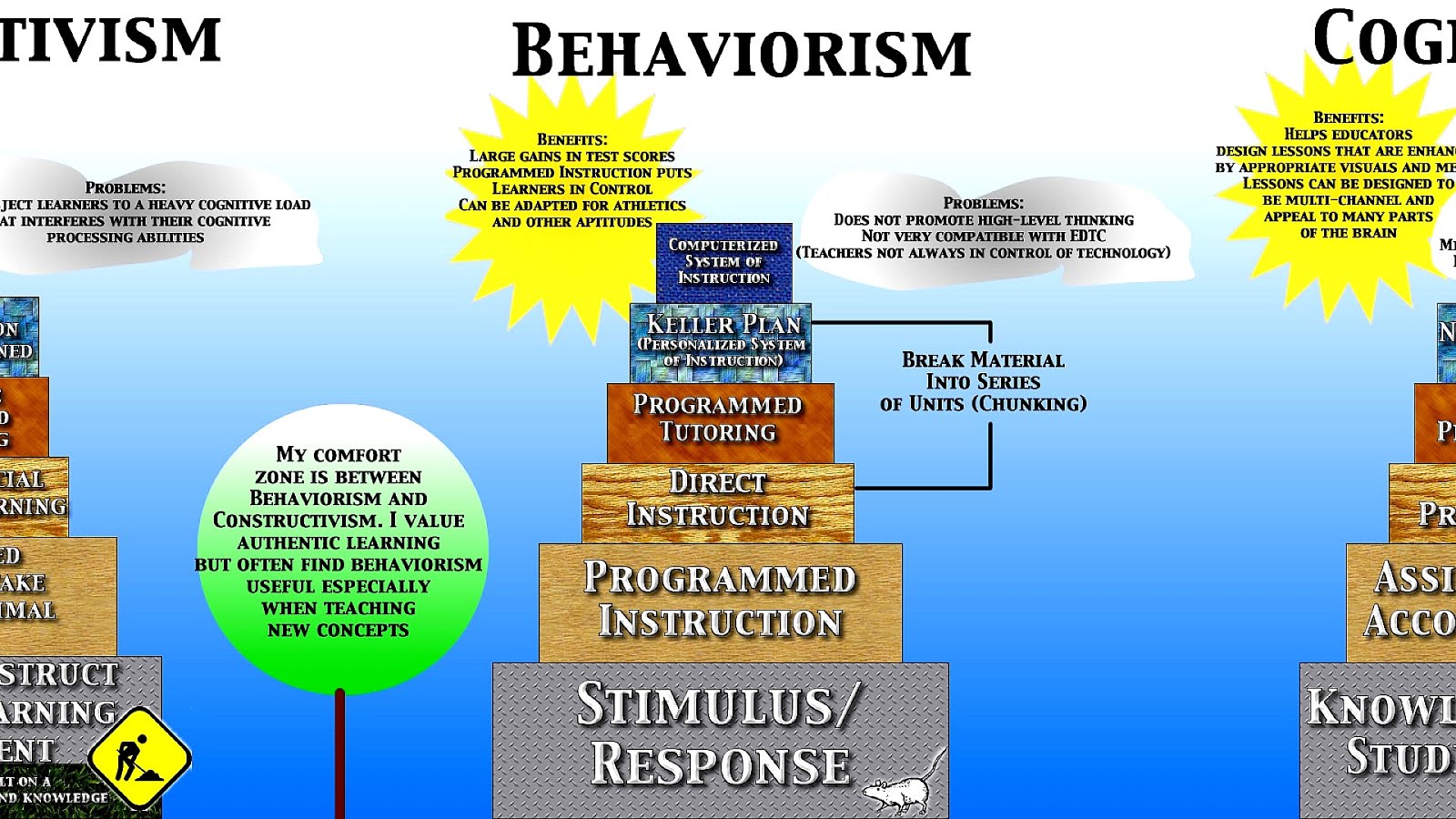Your Who discovered the behaviorist theory images are ready. Who discovered the behaviorist theory are a topic that is being searched for and liked by netizens now. You can Download the Who discovered the behaviorist theory files here. Download all royalty-free photos and vectors.
If you’re searching for who discovered the behaviorist theory images information related to the who discovered the behaviorist theory keyword, you have visit the ideal blog. Our site always gives you hints for downloading the highest quality video and image content, please kindly surf and locate more enlightening video content and images that fit your interests.
Who Discovered The Behaviorist Theory. A major object of study by behaviorists was learned behavior. Watson 1878-1958 and B. B Watson disliked unobservable data. Skinner rejected introspective methods as being subjective and unquantifiable.
 The Audiolingual Method Learning Theory Foreign Language Teaching Teaching Tips From in.pinterest.com
The Audiolingual Method Learning Theory Foreign Language Teaching Teaching Tips From in.pinterest.com
The work of Skinner was rooted in a view that classical conditioning was far too simplistic to be a complete explanation of complex human behavior. The only valid Psychological approach was the objective. Pavlovs approach aims to study behavior that is observable and directly measurable. Theorists who support this theory define learning as simply acquiring of new behavior based on the environment of the learning process. An experimental analysis and he wrote on paper everything he studied until in 1974 he summed up his work in a famous. Watson 1878-1958 and B.
The only valid Psychological approach was the objective.
Burrhus Frederic Skinner March 20 1904 August 18 1990 was an American psychologist behaviorist author inventor and social philosopher. Watson and assistant Rosalie Rayner conducted the famous Little Albert experiment. Skinner rejected introspective methods as being subjective and unquantifiable. ORIGINS OF BEHAVIORISM A. Russian Physiology of Reflexes Ivan MikhailovichSechenov Proposed Main purpose of the central nervous system was to inhibit reflexive behavior Development establishes inhibitory control over reflexive behavior. Henry Herbert Donaldson.
 Source: newlearningonline.com
Source: newlearningonline.com
Quite innovatively for the time he found Freudian-based explanations of behavior too theoretical and disagreed with the eugenic idea of heredity determining how one. Learn about Watsons life and the path that led him to develop his behaviorism theory explore. The work of Skinner was rooted in a view that classical conditioning was far too simplistic to be a complete explanation of complex human behavior. Watson and assistant Rosalie Rayner conducted the famous Little Albert experiment. His practice of the science of behaviorism which studies what people do and makes predictions as a result of those observations showed him that human conditioning comes as a result of inner reactions to stimuli.
 Source: learningcurveformula.blogspot.com
Source: learningcurveformula.blogspot.com
Watson 1878-1958 and B. Watson and assistant Rosalie Rayner conducted the famous Little Albert experiment. Watson 18781958 John Watson was the founder of behaviorist theory. Skinner 1904-1990 are the two principal originators of behaviorist approaches to learning. Skinner believed that we do have such a thing as a mind but that it is simply more productive to study observable behavior rather than internal mental events.
 Source: funderstanding.com
Source: funderstanding.com
Henry Herbert Donaldson. As in every perspective approach study or theory has its advantages disadvantages strengths and weaknesses. Pavlov studied a form of learning behavior called a conditioned reflex in which an animal or human produced a reflex unconscious response to a stimulus and over time was conditioned to produce the response to a different stimulus that. Was published outlining many of the main points of behaviorism. Rejected the idea of spontaneous or un-elicited behavior.
 Source: termcoord.eu
Source: termcoord.eu
History of behaviorism. In 1938 he wrote his first study called the behavior of organisms. Watson made great advances in social science through the rigor of his work and his concern for observable behavior rather than musing about internal mechanisms. Watsons theory of behavior explains all human actions as responses to stimuli. Skinner believed that we do have such a thing as a mind but that it is simply more productive to study observable behavior rather than internal mental events.
 Source: biznewske.com
Source: biznewske.com
Quite innovatively for the time he found Freudian-based explanations of behavior too theoretical and disagreed with the eugenic idea of heredity determining how one. Watson believed that psychology should only study what could be measured seen and observedin some way. Pavlov studied a form of learning behavior called a conditioned reflex in which an animal or human produced a reflex unconscious response to a stimulus and over time was conditioned to produce the response to a different stimulus that. His practice of the science of behaviorism which studies what people do and makes predictions as a result of those observations showed him that human conditioning comes as a result of inner reactions to stimuli. Pavlovs approach aims to study behavior that is observable and directly measurable.
 Source: courses.lumenlearning.com
Source: courses.lumenlearning.com
The four main psychologists who lead to the development of behaviorist theory were Watson Pavlov Thorndike and Skinner. Watson 18781958 John Watson was the founder of behaviorist theory. Skinner rejected introspective methods as being subjective and unquantifiable. He translated Pavlovs work with dogs into everyday life and in particular the field of advertising. An experimental analysis and he wrote on paper everything he studied until in 1974 he summed up his work in a famous.
 Source: slideplayer.com
Source: slideplayer.com
Watson was a major proponent of shifting the focus of psychology from the mind to behavior and this approach of observing and controlling behavior came to be known as behaviorism. Behaviorism started as a reaction against introspective psychology in the 19th century which relied heavily on first-person accounts. Was published outlining many of the main points of behaviorism. Watsons theory of behavior explains all human actions as responses to stimuli. Quite innovatively for the time he found Freudian-based explanations of behavior too theoretical and disagreed with the eugenic idea of heredity determining how one.
 Source: slideplayer.com
Source: slideplayer.com
Considering free will to be an illusion Skinner saw human action as dependent on consequences of previous actions a theory he would. History of behaviorism. Early work in the field of behavior was conducted by the Russian physiologist Ivan Pavlov 18491936. Watson believed that human behavior resulted from specific stimuli that elicited certain responses. The most famous proponents of this theory are John.
 Source: prezi.com
Source: prezi.com
B Watsons study and work in psychology began at the University of Chicago where he began developing what would come to be called behaviorism. Pavlovs approach aims to study behavior that is observable and directly measurable. ORIGINS OF BEHAVIORISM A. The behaviorist movement began in 1913 when John Watson wrote an article entitled Psychology as the behaviorist views it which set out a number of underlying assumptions regarding methodology and behavioral analysis. Watson and assistant Rosalie Rayner conducted the famous Little Albert experiment.
 Source: researchgate.net
Source: researchgate.net
The most famous proponents of this theory are John. Was published outlining many of the main points of behaviorism. Pavlov studied a form of learning behavior called a conditioned reflex in which an animal or human produced a reflex unconscious response to a stimulus and over time was conditioned to produce the response to a different stimulus that. Watson 18781958 John Watson was the founder of behaviorist theory. Considering free will to be an illusion Skinner saw human action as dependent on consequences of previous actions a theory he would.
 Source: slideplayer.com
Source: slideplayer.com
A major object of study by behaviorists was learned behavior. Burrhus Frederic Skinner March 20 1904 August 18 1990 was an American psychologist behaviorist author inventor and social philosopher. Behaviorism theory was discovered by Watson and it mainly focuses on observable characteristics and does not acknowledge any independent activities of the mind. Watson was a major proponent of shifting the focus of psychology from the mind to behavior and this approach of observing and controlling behavior came to be known as behaviorism. Watson believed that psychology should only study what could be measured seen and observedin some way.
 Source: researchgate.net
Source: researchgate.net
Considering free will to be an illusion Skinner saw human action as dependent on consequences of previous actions a theory he would. Watson made great advances in social science through the rigor of his work and his concern for observable behavior rather than musing about internal mechanisms. Russian Physiology of Reflexes Ivan MikhailovichSechenov Proposed Main purpose of the central nervous system was to inhibit reflexive behavior Development establishes inhibitory control over reflexive behavior. Watson believed that human behavior resulted from specific stimuli that elicited certain responses. Watson 1878-1958 and B.
 Source: slideshare.net
Source: slideshare.net
Burrhus Frederic Skinner March 20 1904 August 18 1990 was an American psychologist behaviorist author inventor and social philosopher. B Watson disliked unobservable data. Learn about Watsons life and the path that led him to develop his behaviorism theory explore. Watson was a pioneering figure in the development of the psychological school of behaviorism. Watson 18781958 John Watson was the founder of behaviorist theory.
 Source: pinterest.com
Source: pinterest.com
The behaviorist movement began in 1913 when John Watson wrote an article entitled Psychology as the behaviorist views it which set out a number of underlying assumptions regarding methodology and behavioral analysis. B Watson disliked unobservable data. Watson believed that human behavior resulted from specific stimuli that elicited certain responses. Behaviorism has a tremendous contribution to the development of psychology. Behaviorism started as a reaction against introspective psychology in the 19th century which relied heavily on first-person accounts.
 Source: in.pinterest.com
Source: in.pinterest.com
In 1938 he wrote his first study called the behavior of organisms. History of behaviorism. The behaviorist movement began in 1913 when John Watson wrote an article entitled Psychology as the behaviorist views it which set out a number of underlying assumptions regarding methodology and behavioral analysis. Skinner believed that we do have such a thing as a mind but that it is simply more productive to study observable behavior rather than internal mental events. Rejected the idea of spontaneous or un-elicited behavior.
 Source: in.pinterest.com
Source: in.pinterest.com
The only valid Psychological approach was the objective. Early work in the field of behavior was conducted by the Russian physiologist Ivan Pavlov 18491936. Watson was a pioneering figure in the development of the psychological school of behaviorism. Pavlovs approach aims to study behavior that is observable and directly measurable. Watson and assistant Rosalie Rayner conducted the famous Little Albert experiment.
 Source: learningschoices.blogspot.com
Source: learningschoices.blogspot.com
His practice of the science of behaviorism which studies what people do and makes predictions as a result of those observations showed him that human conditioning comes as a result of inner reactions to stimuli. Considering free will to be an illusion Skinner saw human action as dependent on consequences of previous actions a theory he would. Behaviorism theory was discovered by Watson and it mainly focuses on observable characteristics and does not acknowledge any independent activities of the mind. A major object of study by behaviorists was learned behavior. Watson made great advances in social science through the rigor of his work and his concern for observable behavior rather than musing about internal mechanisms.
 Source: pinterest.com
Source: pinterest.com
A major object of study by behaviorists was learned behavior. A major object of study by behaviorists was learned behavior. Burrhus Frederic Skinner March 20 1904 August 18 1990 was an American psychologist behaviorist author inventor and social philosopher. He translated Pavlovs work with dogs into everyday life and in particular the field of advertising. Learn about Watsons life and the path that led him to develop his behaviorism theory explore.
This site is an open community for users to share their favorite wallpapers on the internet, all images or pictures in this website are for personal wallpaper use only, it is stricly prohibited to use this wallpaper for commercial purposes, if you are the author and find this image is shared without your permission, please kindly raise a DMCA report to Us.
If you find this site serviceableness, please support us by sharing this posts to your preference social media accounts like Facebook, Instagram and so on or you can also bookmark this blog page with the title who discovered the behaviorist theory by using Ctrl + D for devices a laptop with a Windows operating system or Command + D for laptops with an Apple operating system. If you use a smartphone, you can also use the drawer menu of the browser you are using. Whether it’s a Windows, Mac, iOS or Android operating system, you will still be able to bookmark this website.






